
Heat Response
Creative action for Philly’s rising temperatures

In early 2020, shortly after the project began, Philadelphia went into COVID-19 lockdown. Throughout the project's two-year duration, the team adapted to the constantly moving parts of a pandemic and a climate crisis. In summer 2022, Philadelphia hit several heat related records , a result of climate change. Heat is the number one weather-related killer in the United States .
The project worked in three broad phases: Listening and Learning, Collaborative Design, and Sharing Back with the Community. Each artist team interpreted these phases differently, strategizing and planning based on the needs of their neighborhood.
TPL recruited advisors and hired a public relations firm to support the work. The advisory team, experts in climate, public health, and public art, shared input and resources. The public relations firm increased the project's profile; it elevated stories through social media and blog posts and by pitched Heat Response to local news outlets, such as WHYY , The Philadelphia Inquirer , and NBC10 Philadelphia.
Explore the timeline below of project activities conducted during Heat Response in Fairhill (orange), Grays Ferry (blue), Southeast Philadelphia (green), and Citywide (purple).
Heat Response Project Activities Timeline
Photos courtesy of: Jenna Robb (1, 2, 5, 6, 7); Abi Mlo, Trust for Public Land (3, 4); Ceisler Media & Issue Advocacy (8); Susannah Laramee Kidd, Metris Arts Consulting (9, 10).
Citywide
Throughout the project, Mosher served as facilitator and connector, while observing Philadelphia and its urban heat concerns with a bird’s eye view. She derived her work to support and complement the work of the artist teams. This was achieved through tools that connected the three neighborhoods, firstly through the “Popcycle,” a tricycle that was biked across the city. It served as an anchor for handing out custom popsicles produced by Philabundance and packets of materials from each artist team: postcards from Grays Ferry, the Seedlings coloring book from Fairhill, and mullein seeds from Southeast Philadelphia. Abi Mlo supported the project citywide, as a FAO Schwarz fellow at TPL. Joshua Reaves served as community engagement coordinator, piloting the Popcycle around the city.
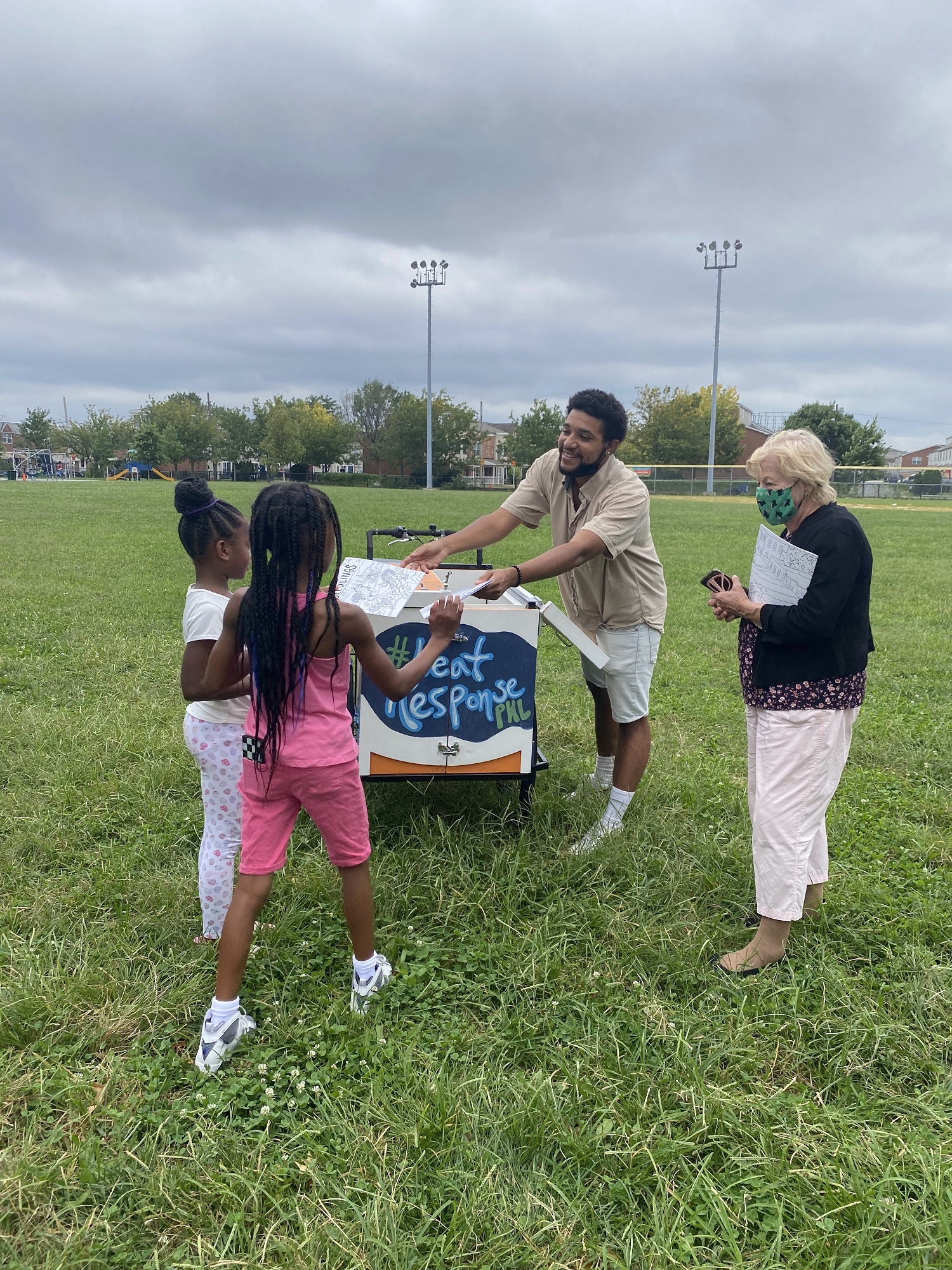
Popcycle in Grays Ferry
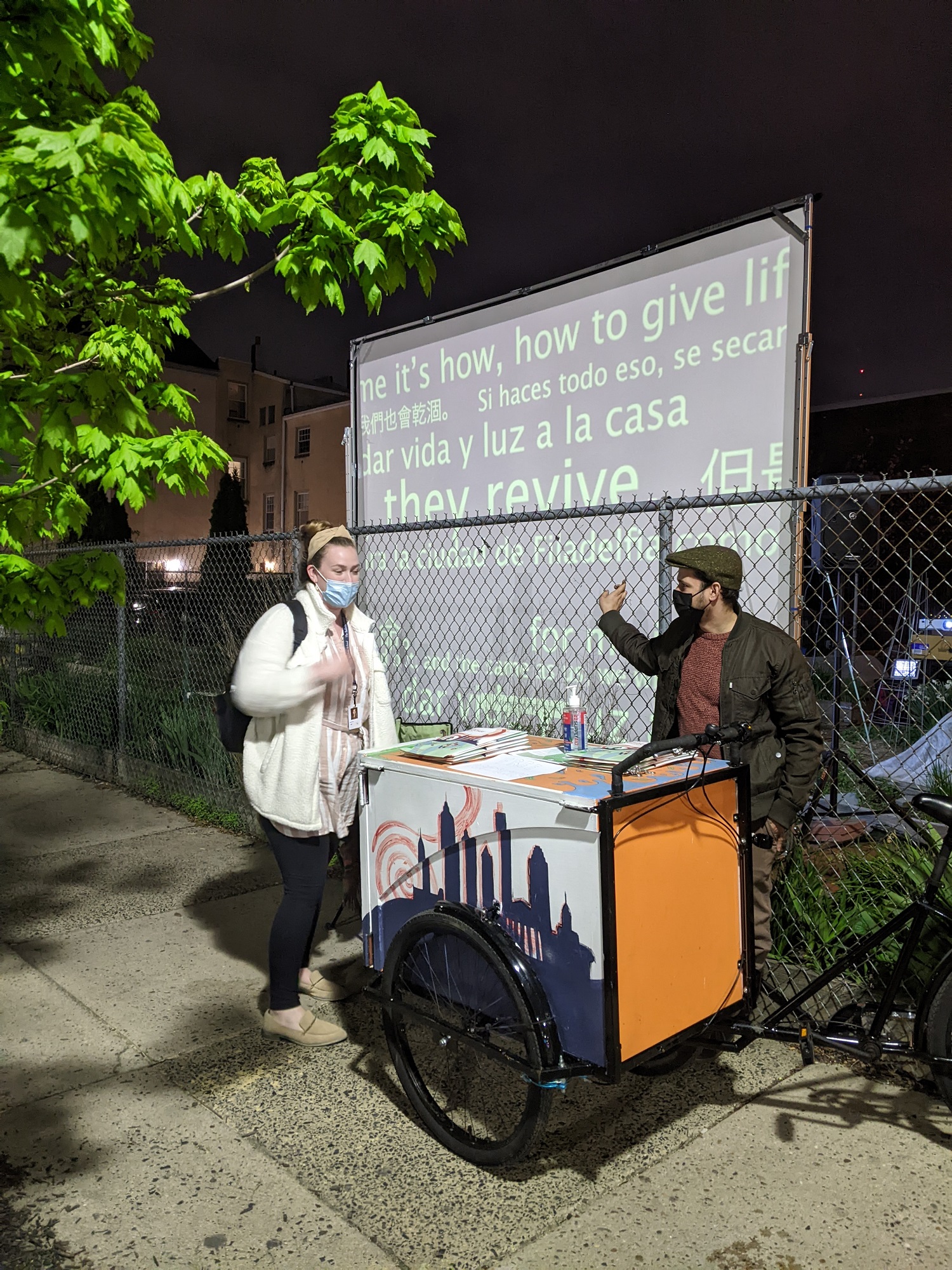
Popcycle in Southeast Philadelphia
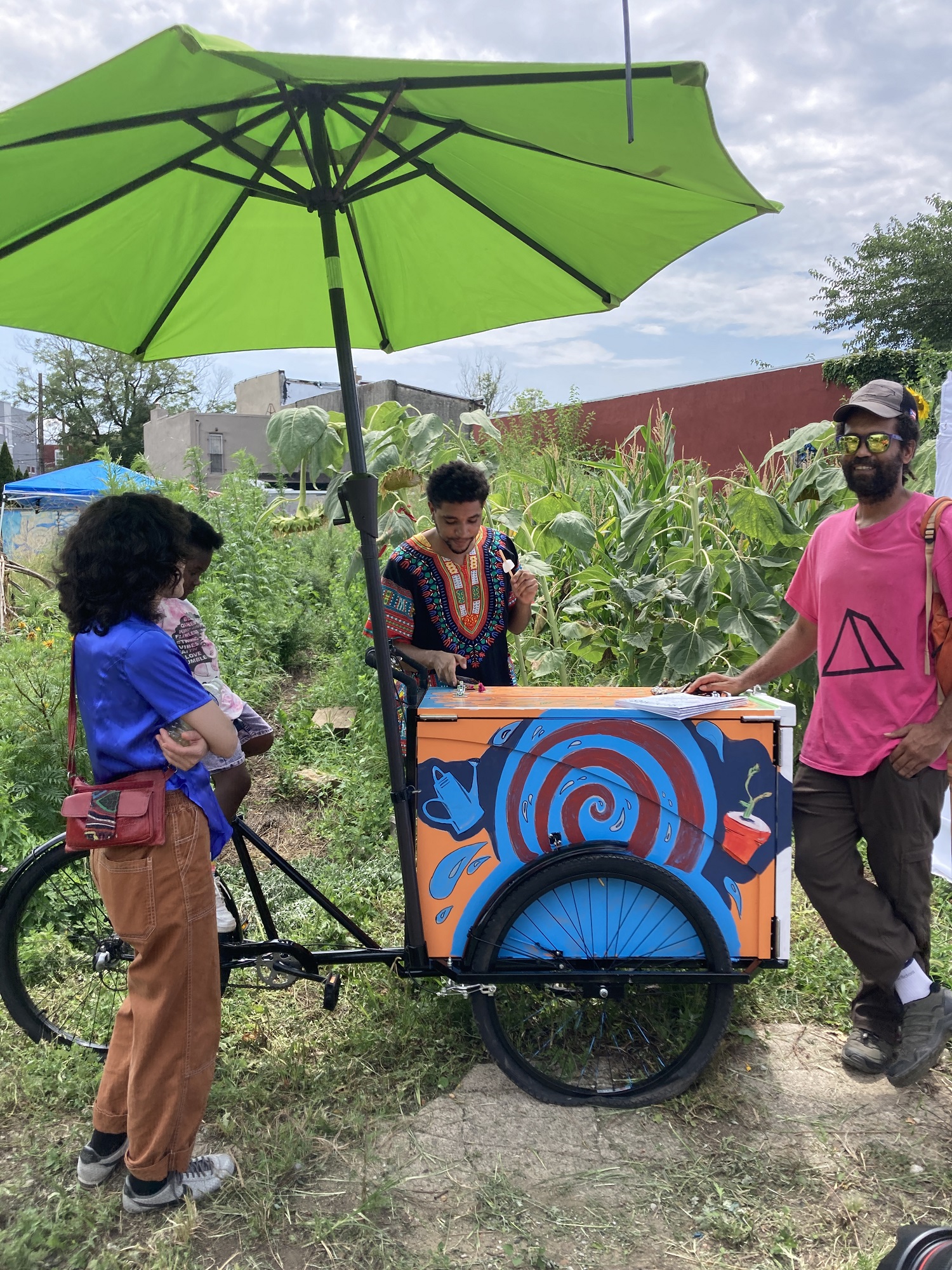
Popcycle in Fairhill
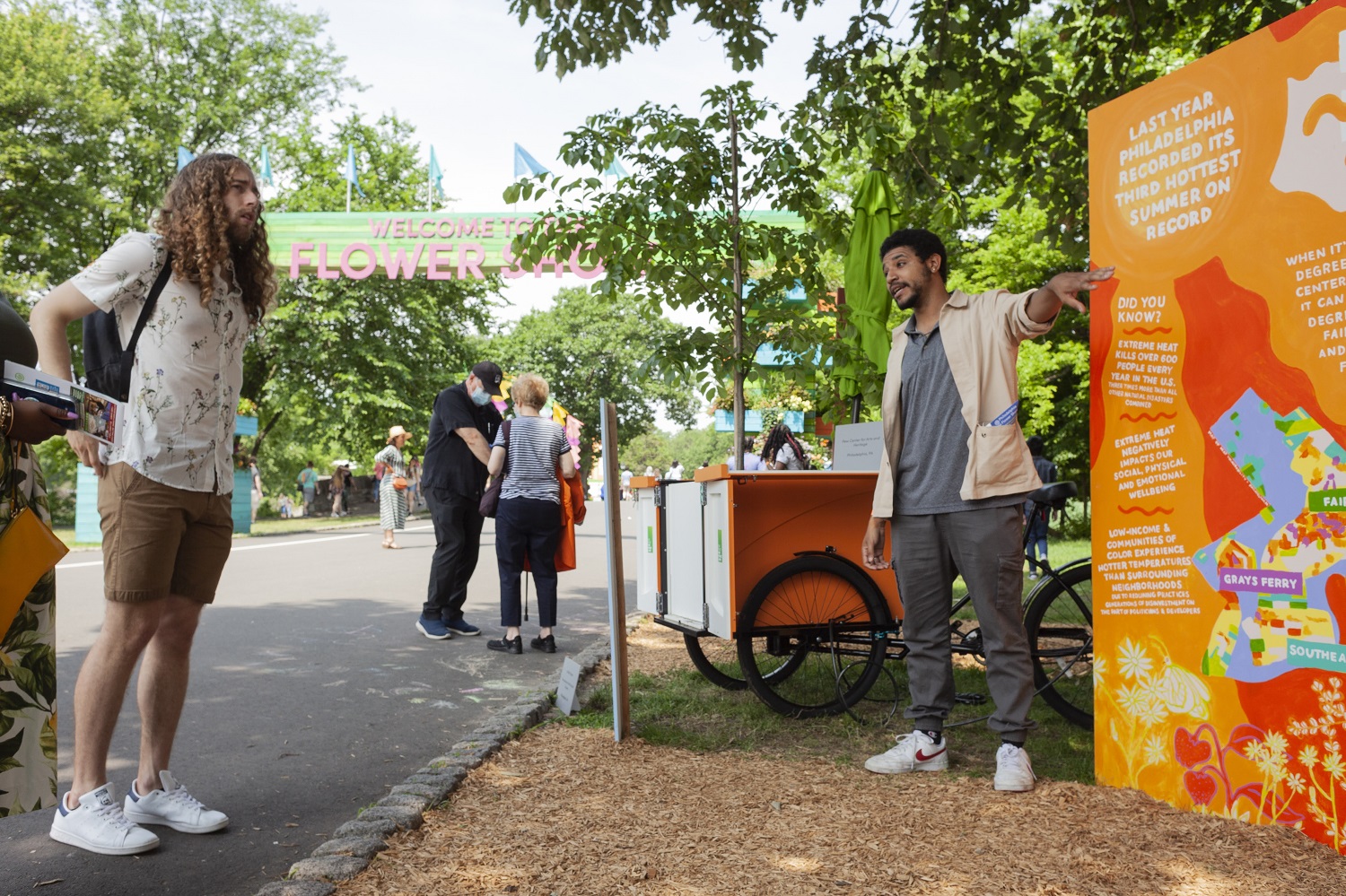
Popcycle at PHS Philadelphia Flower Show

Popcycle at Grays Ferry
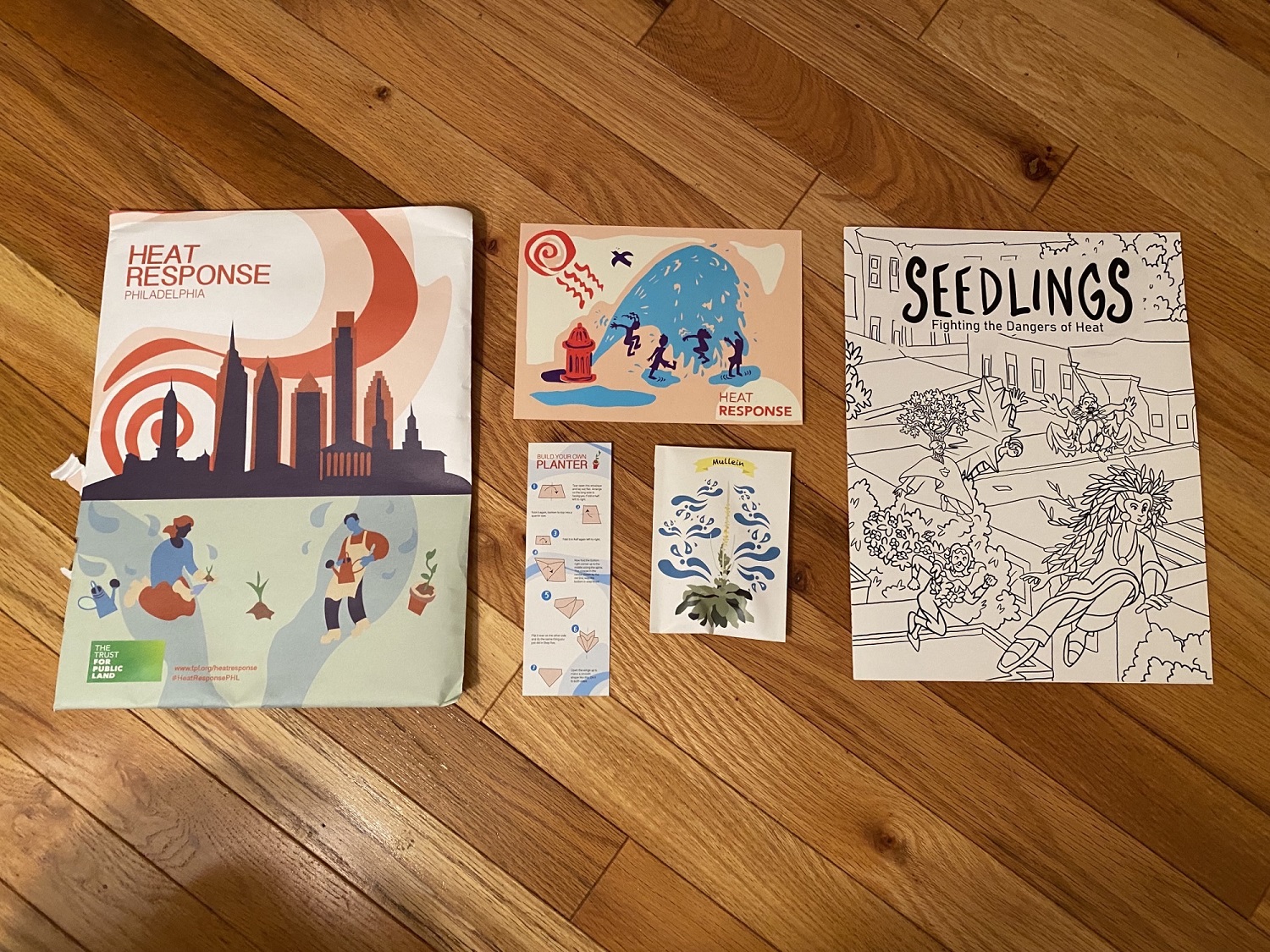
Popcycle packets
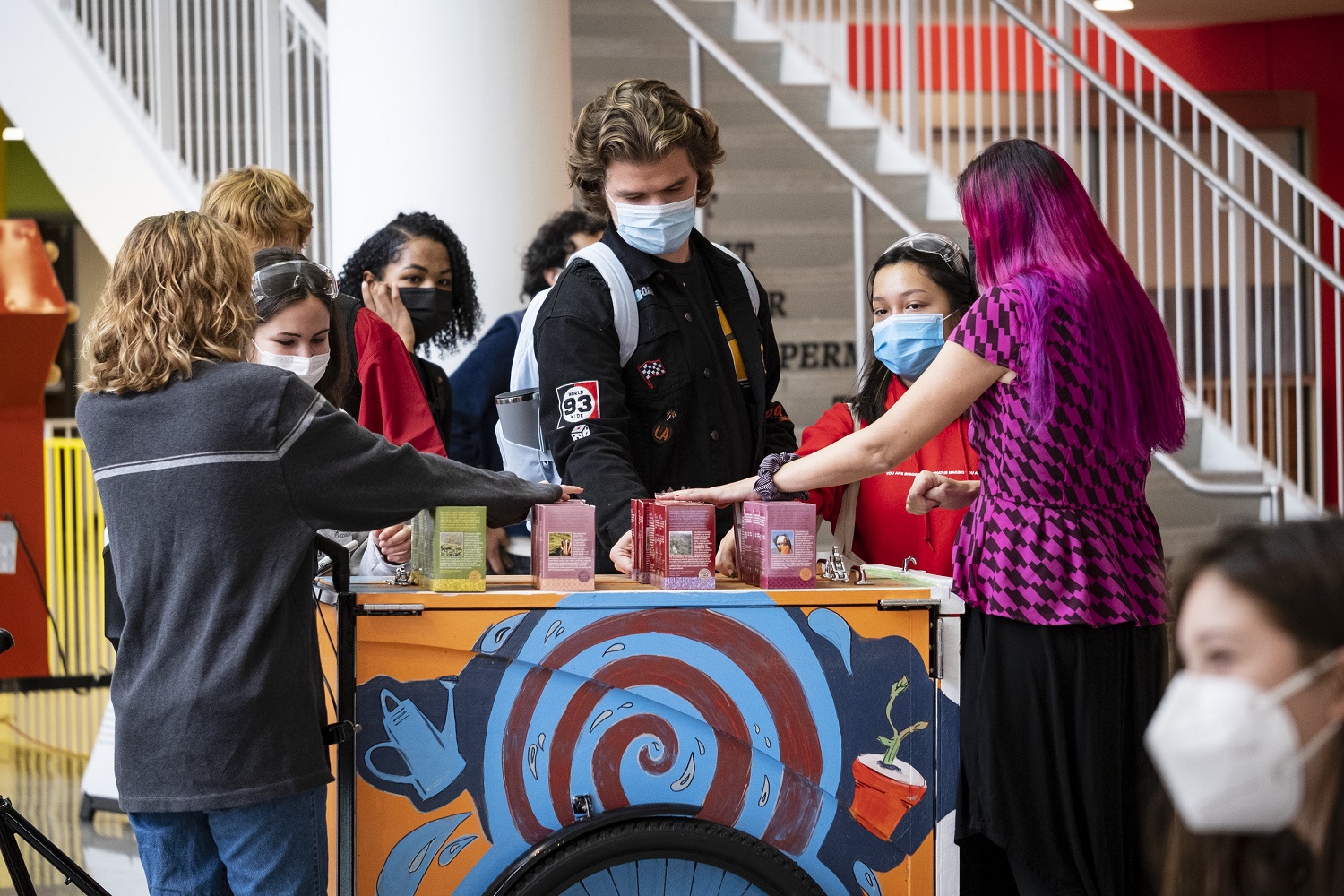
Popcycle at Temple University
While the Popcycle was out in the neighborhoods, Tyler CAP students conducted interviews with residents on both their lived experiences with extreme heat and their imagined future Philadelphia. As a way to connect the Heat Response neighborhoods with other Philadelphia communities, Mosher created audio documentaries featuring the interviews and worked with animator/filmmakers to create a series of short videos. These videos have been and continue to be screened at locations around Philadelphia.
"Meadow City"
Featuring the stories, ideas, and voices of: Phyllis Brennan, Lauren Troop, Ivonne Pinto García, Jasmine (Temple University student), Cheyenne Flores, and David Acosta
Video by Nate Dorr Audio design and editing by Eve Mosher
"Water City"
Featuring the stories, ideas, and voices of: Alberto Oro Ayala, David Acosta, Mar Elliot, and Phyllis Brennan
Video by Gina Furnari Audio design and editing by Eve Mosher
"Green City"
Featuring the stories, ideas, and voices of: Cheyenne Flores, Lauren Troop, Jules DeFonso, Nicole and Alicia (Temple University students), and David Acosta
Audio and video by Eve Mosher
Takeaways
What we learned
Participants expressed how urban heat disrupts their lives and how much joy there can be in coming together to creatively address climate change. Greening our neighborhoods can improve health and wellness, cultural preservation, youth development, community cohesion, and climate resilience.
For more information about our process, outcomes, and reflections, read our project report:
Keep the conversation going
The Heat Response team produced several tools to engage people in conversations about urban heat and how heat, and other climate change effects, disproportionately impact Black, Latino/a/x/e, and immigrant neighborhoods that experience many other inequities.
Use these tools to start conversations in your community:
"Notes on Creative Engagement" inspirational sketchbook:
"Notes on Creative Engagement" by Eve Mosher
Acknowledgments
Thank you to our advisory committee:
- Billy Yalowitz, EdD, Community Arts Practices, Tyler School of Art and Architecture, Temple University
- Shari Hersh, Environmental Justice, Mural Arts Philadelphia
- Reilly Bergin Wilson, PhD, Children’s Environments Research Group, City University of New York
- Susannah Laramee Kidd, PhD, Independent Consultant, transitioned to documentarian role with Metris Arts Consulting
- Kathleen Grady, Health and Human Services, City of Philadelphia
- Erica Smith Fichman, Urban Forestry, Philadelphia Parks & Recreation
- Cheyenne Flores, Office of Sustainability, City of Philadelphia
- Naomi Sturm-Wijesinghe, Philadelphia Folklore Project
- Leah Schinasi, PhD, Dornsife School of Public Health, Drexel University
- Casey Kuklick, Pennsylvania Horticultural Society
Thank you to our partners:
- William Cramp Elementary and Southwark School, School District of Philadelphia
- Lanier Park and Jose Manuel Collazo Playground, Philadelphia Parks & Recreation
- Students in Community Arts Practices, Temple University, Tyler School of Art and Architecture
- Pennsylvania Horticultural Society
- Philabundance
Heat Response has been supported by The Pew Center for Arts & Heritage. The views expressed are those of the authors and do not necessarily reflect the views of The Pew Center for Arts & Heritage or The Pew Charitable Trusts.